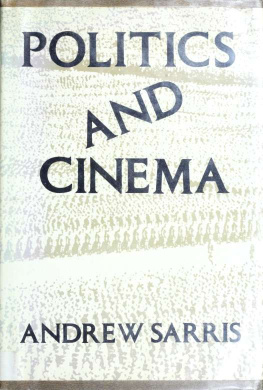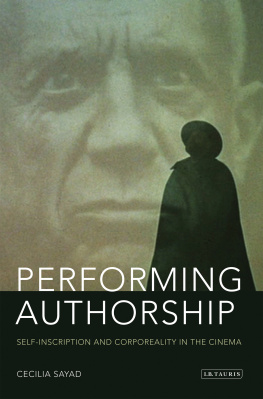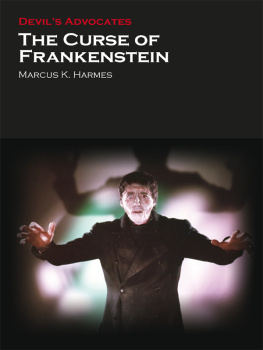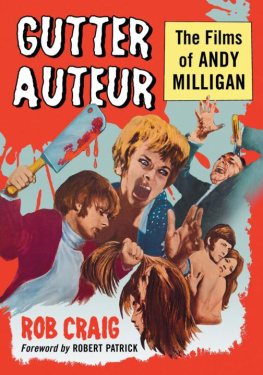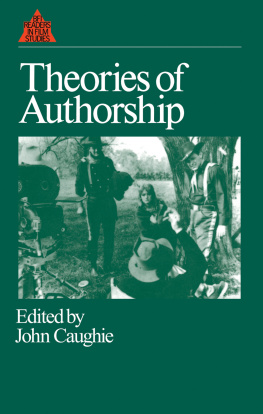A PORTRAIT
OF THE
Auteur
AS
FANBOY
A PORTRAIT
OF THE
Auteur
AS
FANBOY
The Construction of Authorship in Transmedia Franchises
ANASTASIA SALTER and MEL STANFILL
University Press of Mississippi / Jackson
The University Press of Mississippi is the scholarly publishing agency of the Mississippi Institutions of Higher Learning: Alcorn State University, Delta State University, Jackson State University, Mississippi State University, Mississippi University for Women, Mississippi Valley State University, University of Mississippi, and University of Southern Mississippi.
www.upress.state.ms.us
The University Press of Mississippi is a member of the Association of University Presses.
Copyright 2020 by University Press of Mississippi
All rights reserved
Manufactured in the United States of America
First printing 2020
Library of Congress Cataloging-in-Publication Data
Names: Salter, Anastasia, 1984- author. | Stanfill, Mel, 1983- author.
Title: A portrait of the auteur as fanboy : the construction of authorship in transmedia franchises / Anastasia Salter, Mel Stanfill.
Description: Jackson: University Press of Mississippi, 2020. | Includes bibliographical references and index.
Identifiers: LCCN 2020017011 (print) | LCCN 2020017012 (ebook) | ISBN 9781496830463 (hardback) | ISBN 9781496830470 (trade paperback) | ISBN 9781496830487 (epub) | ISBN 9781496830494 (epub) | ISBN 9781496830500 (pdf) | ISBN 9781496830517 (pdf)
Subjects: LCSH: Moffat, Steven, 1961- | James, E. L. | Rowling, J. K. | Smith, Kevin, 1970- | Whedon, Joss, 1964- | Snyder, Zack, 1966- | Jenkins, Patty. | Coogler, Ryan, 1986- | Waititi, Taika. | Fans (Persons) in mass media. | Motion picture producers and directorsCase studies.
Classification: LCC P96.F35 S25 2020 (print) | LCC P96.F35 (ebook) | DDC 306.4/8dc23
LC record available at https://lccn.loc.gov/2020017011
LC ebook record available at https://lccn.loc.gov/2020017012
British Library Cataloging-in-Publication Data available
Contents
Acknowledgments
We begin these acknowledgments with the admission that they will inevitably be incomplete.
This book would likely not exist without our editor, Katie Keene, who encouraged an idea into a manuscript. We are also profoundly grateful for the thoughtful feedback of our peer reviewer, Suzanne Scott, whose fanboy auteur concept first set us on the path to examine all of these media-makers. We hope weve done it justice.
We have benefited in this work from feedback through our research communities: the Society for Cinema and Media Studies; the Association of Internet Researchers; the Electronic Literature Organization; the Modern Language Association; and the Childrens Literature Association. Our friends and colleagues within those spaces whove supported this and other work are too numerous to list.
Thanks to our colleagues at the University of Central Florida, including the Texts & Technology faculty and the Games and Interactive Media faculty, Rudy McDaniel, Amy Giroux, Lynn Hepner, Lindsay Neuberger, Jason Burrell, and Jennifer Sandoval.
Mel would like to thank their fan studies community: Kristina Busse, Alexis Lothian, JSA Lowe, Katie Morrissey, Julie Levin Russo, Suzanne Scott (again), and Mark Stewart, as well as Anastasias ambitious deadlines, which (though stressful) pushed us to finish this before we were hopelessly buried in new projects from our fan auteur figures.
Anastasia would like to thank the collaborators and friends from media and game studies who have influenced this work: Stuart Moulthrop, Aaron Reed, Matt Kirschenbaum, Bridget Blodgett, Dene Grigar, Amanda Cockrell, Kathi Inman Berens, Leonardo Flores, Carly Kocurek, and Jennifer de Winter, as well as Mels patience with very rough drafts and constant Twitter updates on horrible things.
And a special thanks to the members of our academia support Twitter group chat, where both good and bad ideas are encouraged. Emily Johnson, John Murray, and Anne Sullivan have all heard far too many fandom rants as a result of this project. Additional thanks are due to Anne Sullivan for being our graphic designer on the fan auteur graph.
Introduction: Fanboys to the Rescue!
Knowledge is knowing that the Author is dead.
Wisdom is knowing thats just his brand.
The past decade or so has brought a recurring trope of Fanboy to the Rescuehave no fear, it says, this revered franchise is being taken over by a writer, director, or producer who is a fanboy. In this tropewhich, following Suzanne Scott (2011a; 2012; 2013; 2019), we discuss in terms of the fanboy auteurfigures like Joss Whedon, Ronald D. Moore, and Eric Kripke are understood as simultaneously one of us and one of them (S. Scott 2012, 44). Increasingly, fan credentials on the part of writers, directors, and producers have come to be presented as a guarantee of quality media-making. This is, significantly, a strategy of marketing and branding; it is a claim, from the auteur himself or industry PR machines, that the presence of an auteur who is also a fan means the product is worth consuming. Such claims that fan credentials guarantee quality are often contested, with fans and critics alike rejecting various auteur figures as the true leader of their respective franchises. That split, between assertions of fan and auteur status and acceptance (or not) of that status, is key to unravelling the fan auteur.
In A Portrait of the Auteur as Fanboy, we examine the contemporary ascendance of the fan auteur through a series of case studies. We consider both thoroughly mainstream fan auteur figures, such as Zack Snyder and Joss Whedon, as well as more offbeat ones, including Kevin Smith. We examine those who explicitly identify as fans of the source material they engage, like Steven Moffat, E L James, and Patty Jenkins, and those who dont but engage in fannish ways nonetheless, like Taika Waititi and J. K. Rowling. While examples of heirs apparent to transmedia franchises who are framed as fanboys are easy to come by, identification or branding as a fangirl is rare for women in similarly prominent roles. Cases of fangirls as auteurs are not only structurally less likely, given womens greater difficulty breaking into the industry in general, but particularly rare within the high-profile franchises that shape geek culture. We therefore particularly analyze how fanboy auteurs occupy a different cultural position than fangirls. Further, we grapple with the ways this narrative is disproportionately available to white creators, with fannish auteurs of color even less prevalent than white fangirl auteurs, both making visible the whiteness undergirding the positioning of figures like Snyder and Jenkins and considering how the position of auteurs of color like Waititi, Ryan Coogler, and Ava DuVernay diverges in key ways. Ultimately, this distinction of visibility and narratives, in which only the fandom of white men creators is easily trusted, reflects the broader challenges white women fans and fans of color face in geek culture.
In this introductory chapter, we first examine the recent rise of (selectively) constructing fans as ideal audiences. Then, we consider the broader geek turn in media because it is this industrial context that has given rise to fan auteurs. Ultimately, we argue that, while the rise of the fanboy auteur may be overdetermined by these two forces, the gendered form it takes tell us much about our contemporary understandings of authorship and creativity, geek media, and normative forms of fandom.


